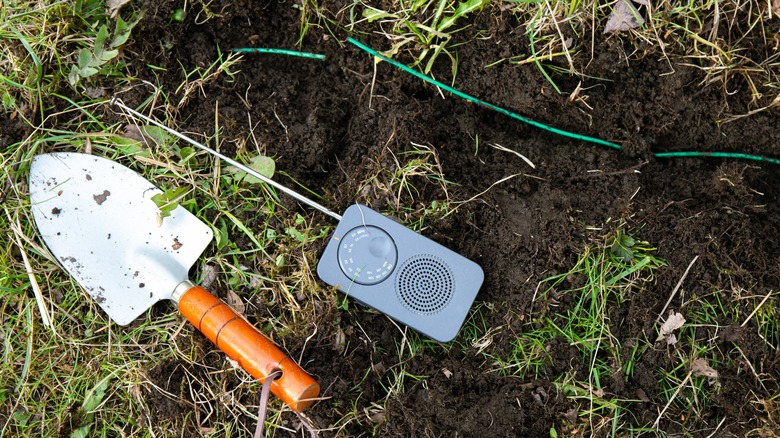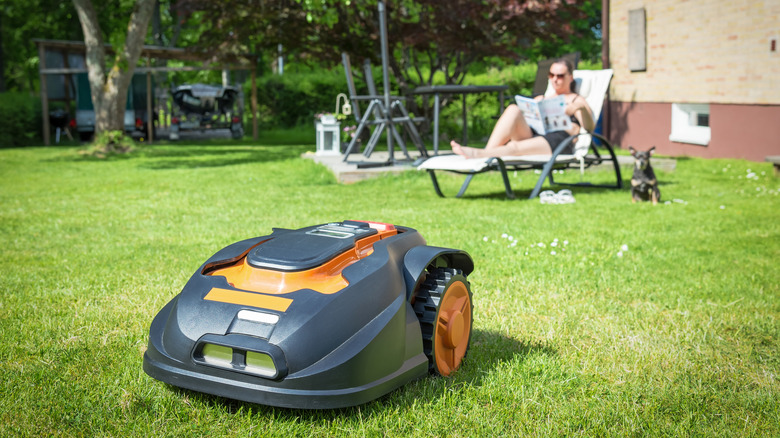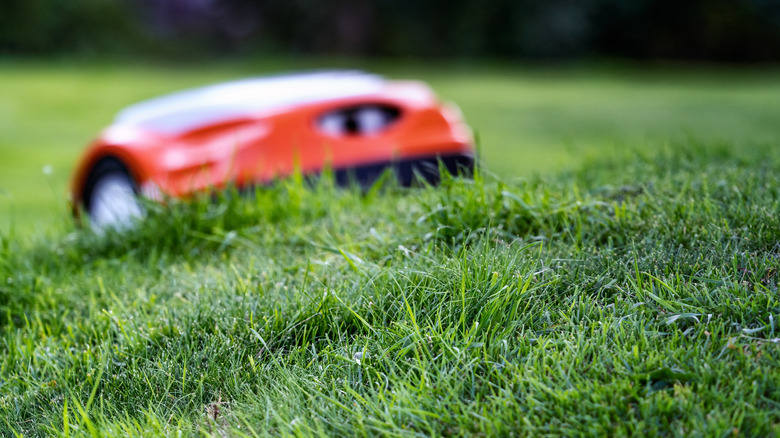Are Robot Lawn Mowers Actually Worth It?
Each year, advancements in robot lawn mowing technology churn out new bots that can allegedly mow more of your lawn without cutting any corners. With a bit of set-up, these robots promise to be fully autonomous. You set the schedule; they unplug themselves, cut your lawn, and plug themselves in at the end. The potential is massive, but the final result doesn't always live up to the hype. Can you really take back your Sunday? Or will buying a robot lawn mower just wreck your hydrangeas? Let's find out.
In this piece, we're not going to dive deep into any particular model. We'll look at the state of robot lawn mowers as a whole, so it's important to note that we're going to be ignoring the top 1%. For example, we'll talk about how robot lawn mowers can't cover 6 acres of grass. There is one that can, but it costs almost $15,000. So are robot lawn mowers worth it? If you've got $15,000 sitting around, absolutely. For the rest of us, the answer is a bit more nuanced.
Husqvarna says it introduced the world's first robotic lawn mower in 1995. Nearly 30 years later, there are now robotic lawn mowers at all sorts of price points and ability levels. The technology still has a ways to go, but many robotic lawn mowers on the market today can make a small, square lawn shine.
Setup can be a bear
Robot lawn mowers will save you lots of time — once they're installed. Until then, you might find it more annoying than pushing around the mower, especially if you're not a big fan of following directions. There are two main groups of robot lawn mowers: machines that use wires to determine cutting zones and mowers that run GPS. Guidewire-led models are the more affordable option, but to get them mowing, you'll have to physically run a wire across the entire boundary area of your lawn. Anything inside the guidewires will be cut, so you need to make painstaking efforts to block off flower beds. In addition to running a boundary wire, you'll also have to install a guide wire that directs your robot through tricky spots and back to its charging station.
Even if you decide to shell out the extra bucks to skip this step and go for a GPS mower, the installation will still involve plenty of patience. Expect to walk the robot through its cuttable area and climb to the highest point of your property to hook up a reference station. Getting the dang thing running properly is the most annoying aspect of owning a robotic lawn mower. You can always have your new unit professionally installed, but that will add a significant extra cost to an already expensive purchase.
You really won't have to mow
While the installation can be painful, it's a one-time operation. After you've got your perimeter installed, connected all wires, and charged up your lawn mower, you might not have to touch grass for the rest of the year. Every modern robot lawn mower will eventually save you time and give you a well-mown lawn.
You set the schedule, you tell the robot where to mow, and it does the rest — eventually. For the first few mows, you should monitor your new lawn care specialist and expect some troubleshooting. A surprise dip or snake hole in your lawn here or there might throw off your machine, a small gap in the perimeter wire might send things screwy, or another unseen obstacle might throw off your robot's mojo. But once it's set up and humming, the robot lawn mowers have a great track record. They just keep on keeping on.
After your lawn mower is set up, it should cut your grass anywhere from 2-4 years before needing a battery replacement. When that time comes, it's relatively easy to replace the battery without having to buy an entire new unit. The only other major maintenance to take care of is replacing the robot's blades, which you should expect to do every 1-2 months, depending on your model.
The mowers cut every 1-2 days
The traditional method of mowing your lawn is to put it off for as long as possible. Robot lawn mowers don't procrastinate. Most of these models will head out from the charging station daily, clipping your grass in a seemingly random pattern. They can't, or won't, finish the job in one charge, instead trusting in the algorithm to trim small sections of your lawn and never taking a day off.
There are a few reasons for the daily snips and snaps rather than one large weekly mow. For starters, the battery life on most of these models isn't enough to comfortably cut the whole lawn at once. Secondly, robotic lawn mowers are equipped with much smaller blades than what you might be used to. Instead of hacking away at a few inches of grass, these lawn mowers are only taking a bit off the top. To maintain cleanliness, they'll head back and forth betwixt each leaf of grass more times than Walt Whitman.
When the mower is first taking over from you, it will look a little messy, but eventually this bit-by-bit technique might actually make for a healthier lawn. The idea that cutting your grass short will save you time in the long run is a lawncare myth, because longer grass helps create healthier roots. Robot mowers will keep your lawn crisp without cutting too short, although the exact length your lawn mower will cut is still adjustable.
They are safe, quiet, and efficient unless you've got a big lawn
Robotic lawn mowers do check off three key boxes that might be enough to convince you to take the pledge. Just like their vacuuming counterparts, all robotic lawn mowers have a collision sensor that will ensure your machine U-turns away from any unexpected objects. Even further, if the lawn mower is ever lifted off the ground, it will automatically stop operation, so any entanglement with kids and dogs is harmless. These lawn mowers are also significantly more quiet than a man-powered machine, especially one that has a combustion engine. You could mow the lawn while you have people over for an outdoor barbeque, and they might not even hear it. But don't worry, they'll notice.
The cherry on top is the robotic lawn mower's power efficiency. You'll enjoy a well-manicured lawn without even noticing an increase in your monthly power bill. A modern robot mower can cut an acre of mowable area for a year on less than 200 kWh of electricity. Unfortunately, their efficiency can only take you so far. Robotic lawn mowers can't compete with the old-fashioned methods of lawn mowing once your lawn starts stretching above the 2-acre range. Manufacturers recommend building an army of robot lawn mowers that each cover its own section of grass to solve this, but you might as well buy a nice riding lawn mower that can cover bigger ranges in a hurry.
Should you purchase a robot lawn mower?
Well, to quote Betty White, "It's a lot like my underwear: depends." People are passionate about their lawn care. There is a growing community of automated mowing lovers on one hand that swear they'll never mow again, and there are also plenty of luddites on the other side who say that mowing their lawn (or making the kids do it) builds character. So, who's right? Maybe they both are. There are cases where it is absolutely worth it to automate your lawn mowing process, and there are other situations where it will almost certainly be more trouble than it's worth. It all comes down to how much grass you've got to cut.
Flat, rectangular lawns less than an acre are a robot lawn mower's wet dream. This is slightly counterintuitive because bigger lawns take more time for humans to mow, so it would make more sense to automate those tasks, but the technology isn't quite there yet. There are a few robotic lawn mowers capable of cutting 6+ acres, but as we discussed earlier, they cost silly amounts of money. It's really as simple as this: as long as your current lawn mower works, it's not worth it to buy a completely new set. However, when it's time to send your unit to the great hardware store in the sky, you might as well replace that task with artificial intelligence.





